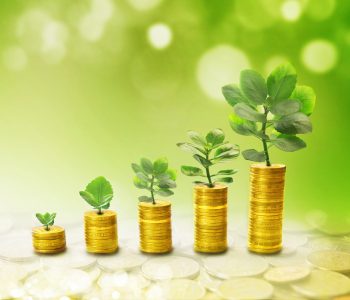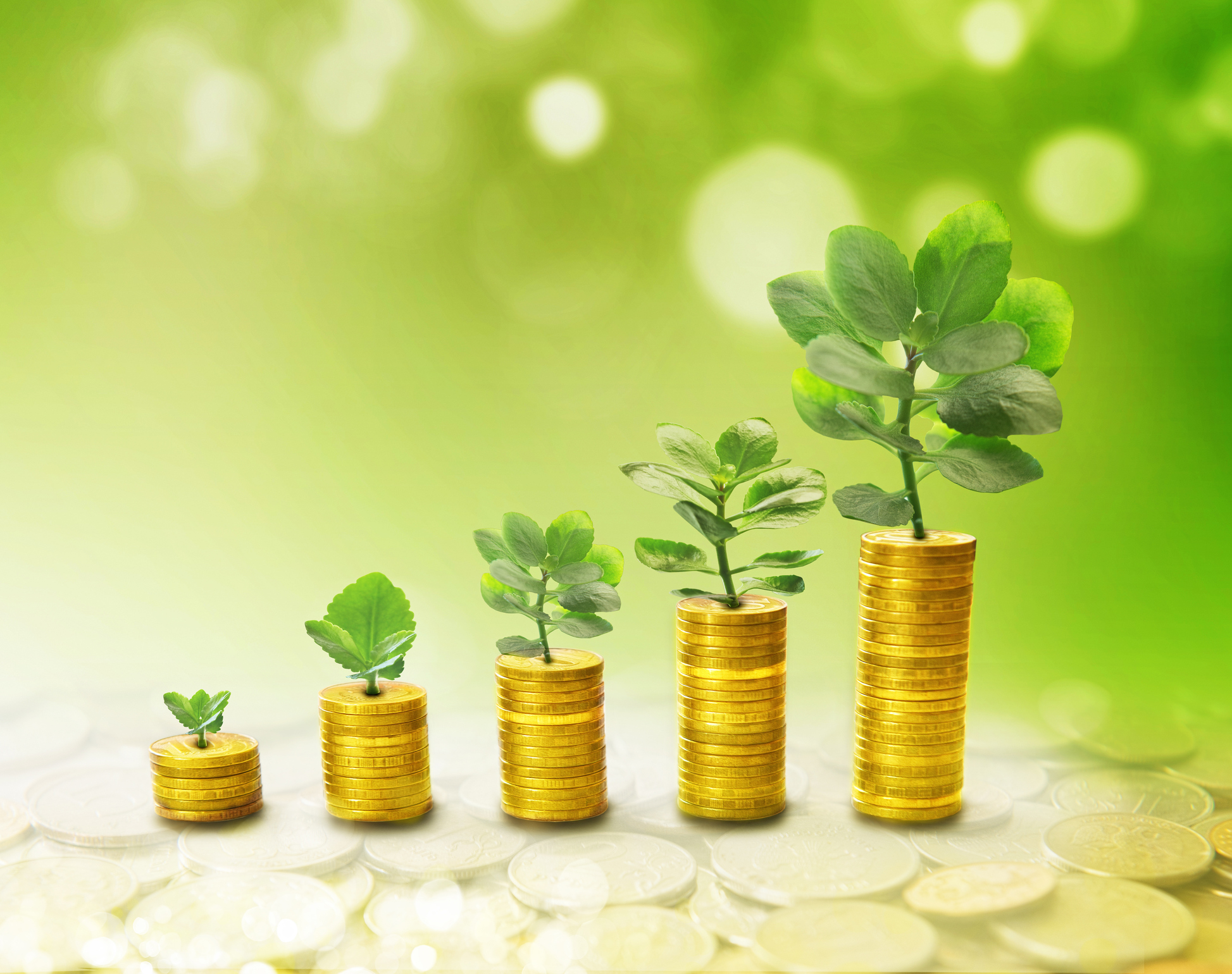How to Calculate Dividend Yield

Dividend Investing
Whether you have years of experience or are new to investing, understanding the financial markets can feel overwhelming, given so many different financial terms. Even those with years of experience could use a refresher, while new investors may not even know where to begin.
This article will explain many dividend investing and other financial terms related to dividends, answering questions such as, “What is a dividend yield?” and explaining how to calculate dividend yield. Below, you’ll find all the information and knowledge needed to help understand the financial markets.
Why Do Companies Pay a Dividend?
A company would pay a dividend to its shareholders for a few reasons, such as:
- Predictable recurring revenue
- Starting the business was very capital-intensive
- The company generates a large amount of cash flow and can afford to pay a dividend and keep some of the earnings to grow the business further
- attract long term investors.
- There may not be as many growth opportunities as there once were, making rewarding shareholders the best use of capital
How Are Dividends Paid?
Depending on how the shares are owned, the payment method used will differ. If you own the shares in a brokerage account, then the cash will be deposited into the cash portion of your account. If you happen to own physical certificates, then a check will be mailed to you.
The company’s board of directors has the choice of when and how often to pay a dividend to its shareholders. Many large companies pay their dividend on a quarterly basis, but there are cases of a business paying a dividend on a monthly, semi-annual, or even annual basis.
There are special cases where a dividend will be paid to shareholders, in addition to the regular dividend. These occur because there is extra surplus cash.
Another special instance of a dividend payment would be a stock dividend. Rather than receiving a cash payment, additional shares are given to shareholders.
Examples of the Various Dividends Payments to Shareholders
For this example, I will be using Southside Bancshares, Inc. (NASDAQ:SBSI) stock, which has rewarded its shareholders with a quarterly dividend, special dividends, and a stock dividend. Below is a chart providing the dates of the various divided methods.
| Payment Date | Payment Type | Payment Amount |
| March 9/2017 | Regular Quarterly Dividend | $0.25 |
| December 1/2016 | Special Dividend | $0.05 |
| December 1/2016 | Regular Quarterly Dividend | $0.25 |
| September 1/2017 | Regular Quarterly Dividend | $0.24 |
| June 28/2016 | Stock Dividend | 5% |
| June 2/2016 | Regular Quarterly Dividend | $0.23 |
| March 10/2016 | Regular Quarterly Dividend | $0.22 |
| December 3/2015 | Special Dividend | $0.0762 |
SBSI stock pays a dividend on a quarterly basis, with the next being in March of this year. The reason why the dividend changed from $0.22 per share in March 2016 to $0.25 is because the company increased its quarterly dividend.
In addition to the regular quarterly dividend, SBSI stock paid a special dividend on December 1, 2016 and December 3, 2015, in the amounts of $0.05 and $0.0762, respectively. Since special dividends are unexpected payments using surplus cash, the amount is not the same in both cases.
On June 28, 2016, there was a stock dividend in the amount of five percent. The number of shares given to shareholders is based on how many there are in total. For example, if you held 100 shares of SBSI stock, there would be five additional shares added to your total holdings. The advantage for shareholders is that there is there no commission cost being charged for the additional shares.
If there happens to be a situation which there would not be enough to purchase one whole share, then a cash payment would be provided instead.
Important Dates for Receiving a Dividend
For this, I will be using using American International Group Inc (NYSE:AIG) stock as an example. AIG stock currently pays a quarterly dividend of $0.32 per share on a quarterly basis.
| Important Date | Term of Each Date |
| February 14/2017 | Declaration Date |
| March 13/2017 | Ex-Dividend Date |
| March 15/2017 | Record Date |
| March 29/2017 | Payment Date |
February 14, 2017 (Declaration Date): The declaration date is the date that the board of directors approves the next dividend payment date, ex-dividend date, record date, and the amount that will be paid out per share.
March 13, 2017 (Ex-dividend Date): In order to qualify to receive the dividend payment, the shares of AIG stock would have to be owned by March 12, 2017 or earlier. Purchasing the shares on March 13, 2017 or later will result in no dividend.
March 15, 2017 (Record Date): This is the date that the company will record all the shareholders that will receive the dividend payment.
March 29, 2017 (Payment Date): This would be the date that the payment of $0.32 per share of AIG stock would be received.
Dividend Yield Definition and Example
Dividend yield is the dividend payment in a percentage format, based on the current share price.
To better understand this, I will be using New York Community Bancorp, Inc. (NYSE:NYCB) stock as an example.
The current share price of WMT stock is $15.21 and the current dividend yield is 4.47%. This would mean that if the shares were purchased at the current share price, then there would be 4.47% returned back via the dividend payment.
How Does a Stock Yield Work?
There is a simple formula that could be used to determine the dividend yield on a stock.
New York Community Bancorp is currently trading at $15.21 and paying a dividend of $0.17 per quarter. The calculation is quite easy to do and only takes a few steps. The formula looks like this:
Step 1: Take the dividend and make it equal to the annual dividend payment. In the case of NYCB, it would be $0.68 per share annually.
Number of Dividend Payments Annually: 4
Dividend Paid Per Share (Quarterly Dividend): $0.17
Annual Dividend Payment: $0.68
Step 2: Take the annual payment and divide it by the current stock price. For NYCB, the current dividend yield would be 4.47%.
Calculate Monthly Dividend Yield
The same formula can be used to calculate the dividend yield on a monthly dividend-paying stock.
For this example, I will be using Realty Income Corp (NYSE:O) stock.
Step 1: Since it is paid on a monthly basis, the dividend needs to be multiplied by 12. The annual dividend ends up being $2.53 per share.
Number of Dividend Payments: 12
Dividend Paid Per Share (Paid Monthly): $0.21
Annual Dividend Payment: $2.53
Step 2: Take the annual dividend payment and divide it by current stock price.
How to Calculate Dividend Yield with a Growing Dividend
When calculating the yield for an increasing dividend, it is largely no different from a steady one, but with one small change. Below is an example using Gilead Sciences, Inc. (NASDAQ:GILD) stock, which pays a quarterly dividend. Below are the past five dividend payments for GILD stock, which has seen two increases.
| Payment Date | Payment Amount (Per Share) |
| March 30/2017 | $0.52 |
| December 29/2016 | $0.47 |
| September 29/2016 | $0.47 |
| June 29/2016 | $0.47 |
| March 30/2016 | $0.43 |
When it comes to calculating the yield on a dividend growth stock, the focus should be only on the most recent dividend payment. In this case, it would be the one for $0.52 per share.
Below are the calculations to calculate the current dividend yield.
Step 1: Annualized the dividend payment.
Number of Dividend Payments: 4
Dividend Paid Per Share: $0.52
Annual Dividend Payment: $2.08
Step 2: Take the annual dividend payment and divide it by the current share price. This would reflect a current dividend yield of 2.98%.
Dividend Yield Formula: = $2.08/$69.85 = 2.98%
How to Determine If the Dividend Payment Is Safe
The most important metric for any dividend stock is the payout ratio. This ratio represents the percentage of earnings that is being paid out as a dividend. Below is an example.
| Company Name | Dividend Payment (Annual) | Payout Ratio |
| Target Corporation | $2.40 | 48% |
| American International Group Inc. | $1.28 | 343% |
When taking a look at Target Corporation (NYSE:TGT), the current annual dividend payment represents 48% of the earnings that are generated. Based on this ratio, there is a high probability that the dividend payment continues to be paid. Since the payout ratio is very modest, future dividend growth is also possible.
In the case of American International Group Inc (NYSE:AIG), the dividend payments represent more than the earnings coming in. For each dollar that is being generated, $3.43 is being paid out as a dividend. This may be a result of management using debt or equity to pay the dividend. Until the earnings increase, there is a low probability of seeing the dividend rise in the future.
Another strong indicator to determine if there will be a cut or hike is the dividend’s history. If the dividend has never been cut and only seen increases, then there is a higher likelihood of this trend continuing.
What Is a Good Dividend Yield?
The answer to this question depends on your investment objectives and goals. There are trends and patterns that could be uncovered when digging deeper into companies. If you are dividend growth investor, the current dividend may not be as high as other dividend stocks.
For example, Abbott Laboratories (NYSE:ABT) stock is currently priced at $44.69, with a dividend yield of 2.37%. The dividend has grown for 44 consecutive years; the longer the shares are held, the higher the yield on cost will rise, provided the dividend continues to grow.
If you are a high-dividend investor, the dividend may be steady but not grow at all. An example would be Government Properties Income Trust (NASDAQ:GOV) stock. It is currently trading at $19.57 and has a yield of 8.79%, with no recent dividend increases.
In each case, there is an advantage to holding a dividend growth stock and a high-yield stock. With a dividend growth stock, the current dividend is not high, but will be protected from inflation if the dividend continues to grow. This will also attract investors, based on past hikes, and bid up the stock price over time.
In the case of a high-dividend stock, there may not be growth, but the dividend yield is much higher and you are being compensated for your time at the beginning of the investment.











